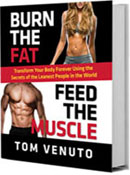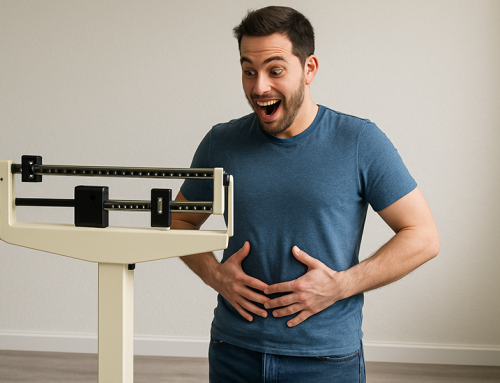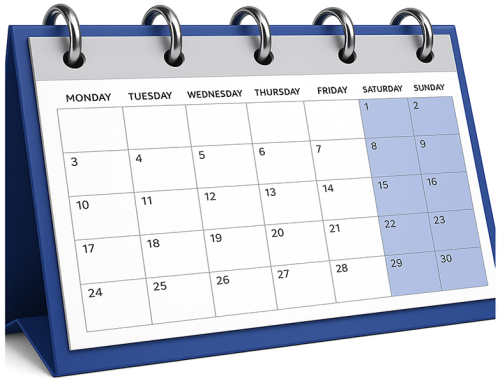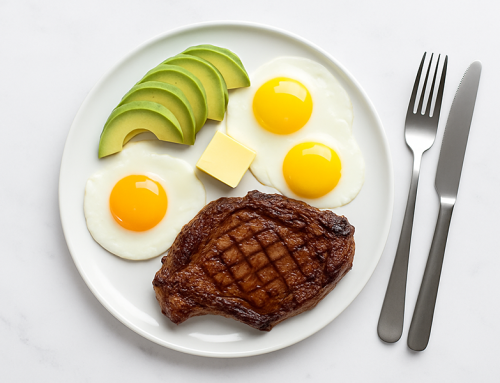You may have heard (or realized first hand!), that it’s more difficult for women to lose fat than men. Slow female fat loss is a problem. Differences in male and female hormones are certainly involved – both in the fat loss process as well as in the patterns of fat storage on the body. But the biggest obstacle is not hormonal issues, it’s one little fat loss relativity factor that almost all women overlook…

This especially applies to short and petite women who still have body fat to lose.
Case in point: Last week I received an email from a female reader who told me she was doing 3 weight training and 6 cardio sessions per week and the cardio was 45 minutes at a clip.
She said she weighed 111 lbs at 4 feet 11 inches tall, but even though she was petite, she had “several pounds of flab” she wanted to lose and just felt kind of “mushy.”
She had been really inspired by the Burn the Fat, Feed the Muscle transformation success stories, especially the finalists in our Burn the Fat transformation challenge which were featured at the Burn the Fat Inner Circle.
But she said she was starting to get discouraged because she was losing so much slower than everyone else, it seemed.
First I asked her if she knew her body fat percentage. It may seem odd, but it’s possible to be a so-called “ideal” body weight and have high body fat and low lean body mass. That’s called “normal weight obesity” or in the popular vernacular, “skinny fat”).
With the prevalence of body image disorders today, (and lets face it, the mirror and scale play tricks on us all), it’s especially important to objectively measure body composition, or at least understand body fat versus body weight on an intellectual level.
Having confirmed that she did actually have body fat to lose, even though she wasn’t overweight, here’s what I told her:
When you have a smaller body, you have lower calorie needs. When you have lower calorie needs, your relative deficit (20%, 30% etc) gives you a smaller absolute deficit and therefore you lose fat more slowly than someone who is larger and can create a larger deficit more easily.
Here’s an example for a man
Me: I’m male, 5’ 8”, a lean 192 lbs and very active:
Daily calorie maintenance level: 3300 calories a day
20% calorie deficit = cut out 660 calories
Optimal calorie intake for fat loss: 2640 calories a day
On paper predicted fat loss: 1.3 lbs of wt loss per week
At 2640 calories per day, I’d drop fat rather painlessly. If I bumped up my calorie burn or decreased my intake by another 340 a day, that would be enough to give me 2 lbs per week wt loss. Either way, that’s hardly a starvation diet (Ah, the joys of being a man).
For smaller women, the math equation is very different.
At only 4 foot 11 inches tall and 111 lbs, a female’s numbers would look like this:
Daily maintenance level 1930 calories (even at a moderately active exercise level).
20% deficit would = 386 calories
Optimal intake for fat loss 1544 calories a day
On paper predicted fat loss only 8/10th of a lb of fat loss/wk.
If you took a more aggressive calorie deficit of 30%, that’s a 579 calorie deficit which would now drop the calorie intake to 1351 calories/day.
That’s pretty low in calories. However, you would still have a fairly small calorie deficit. In fact, I would get to eat twice as many calories (2600 vs 1300 per day) and I’d still get almost twice the weekly rate of fat loss!
I know, this isn’t “fair,” but it doesn’t mean women can’t get as lean as they want to be. It means that on average, women will drop fat slower than men. It also means women with small bodies will lose fat more slowly than larger women.
What to do about it?
5 TIPS FOR FEMALE FAT LOSS (*This applies to short and smaller-framed men too!)
#1 Set a goal that’s realistic relative to your gender, body size and weight.
ONE POUND a week of fat loss is much more in line with a realistic goal for a small-framed female. Maybe even a bit less in some cases. Overweight people can lose it faster. Men can drop it faster.
#2: Weigh and measure all your food any time you feel you’re stuck at a plateau, just to be sure.
When your calorie expenditure is on the low side, you don’t have much margin for error. One extra pastry, muffin, cookie, or handful of nuts and ZAP, your little 20% calorie deficit is GONE!
#3: Remember that body fat and body weight are NOT the same thing.
Judge your progress on body composition. (I teach how to measure your body fat and lean body mass in the privacy of your own home as part of my Burn the Fat, Feed the Muscle Program).
#4: Keep a weekly progress chart for weight, body fat percentage, pounds of fat and pounds of lean body mass.
Water weight and lean body mass gains can mask fat loss so it’s possible to make progress even though the scale isn’t moving. Pay special attention to the progress trend over time.
#5: Burn more calories in the gym and all day long.
When you have a very low basal metabolic rate because you are very small in body size or stature, you simply don’t have much room to work on the dietary side of the energy balance equation. Typically you hear coaches tell you that diet is the more important of the two sides, but really the only way to achieve more substantial deficits is to use both the nutrition side and the activity side of the equation.
Remember that activity isn’t just your time I the gym. Your non-exercise activity is where the bulk of your activity calorie burn comes from. This means it’s vital stay active all day long. Use a pedometer and track your step count. Take up a physical hobby like hiking or biking or even gardening. Get a dog that demands frequent walks. Take advantage of every opportunity to move more – park in the back of the lot, use stairs, not the elevator, do your own house and yard work. Get up on the hour every hour if you have a desk job, and so on.
And if you’re limited on time for formal workouts, burn more calories in the time you’re already spending. Make 2 or 3 of your long cardio sessions higher in intensity so you burn more calories in the same or even less time. Set up your weight training with big compound exercise and brief rest intervals so you burn more calories from strength training, in the same time, as well.
If you have a naturally low basal energy recruitment and you choose to remain sedentary, weight loss is going to be long slow road ahead. You just get active and stay active.
An update and some concluding advice
When I first shared this information with my readers, some women told me that all this did was get them depressed or prompt them to reply, “It’s not fair!” Well, no it’s not fair. But “Better the hard truth than a comforting fantasy,” as Carl Sagan once said.
Look at it this way: This information should not be depressing – it should be encouraging and empowering to you because this “hard truth” helps shorter/ smaller women understand how to set realistic goals and know exactly what to to do to reach them:
You have to stay very active, train hard, BURN a lot of calories instead of just dieting, and you will reach any goal. It just takes a little patience.
Dropping only ONE pound per week (or less) may seem excruciatingly slow, but even if you get a HALF a pound a week fat loss, that’s still progress. Celebrate it. Keep that up over time, and you WILL reach your goal. Persistent action on a well-formed plan pays.
Train hard and expect success,
Tom Venuto,
Author of:
Burn the Fat, Feed the Muscle: Fat Burning Secrets of the Leanest People in the World
Founder and CEO:
Burn the Fat Inner Circle: The Fitness Support Community for motivation, inspiration and transformation







This couldn’t be better timed. I am 4’10” 55 years old,130 lbs., with a body fat percentage of around 32%, (according to my scale which supposedly measures fat percentage) and am trying to lose a measly 10 lbs. I’m not trying to get ripped, just a little more lean. It’s so hard to keep the deficit in place when you’re already limited to so few calories! Like you said, one little something can throw the whole week off! This past year, my muscle mass has increased, but my weight has stayed pretty much the same. My conclusion: I’m just not working out hard enough, and my cheats are definitely adding up to sabotage! So with this in encouragement in hand, I may just get on track and lose at that snail’s pace and reach my goal. Thanks!
Yep, it can be hard sometimes when you have so few calories to work with. but the bright side is, its very clear you know exactly what’s going on and exactly what to do to keep progress coming. It’s ok to be a “SLOW BURNER” – just keep burning!
Thank you so much for this, because this is exactly the trouble I’ve been having. I’m overweight but I’m also short (5″4) and I’ve been plateaued for the past two-three months. I’ve recently upped my gym time, and cut my calories (in the past week) so I should see some progress soon, but its good to know what you have to do to see the results you want. So yes it sucks and isn’t fair, but I’d rather know what it takes than be following rules that don’t work for my body type and getting disheartened in the process.
How many calories are you consuming? I’m 5’4″, 150 lbs, 21.3% body fat per caliper. I’ve been trying to lose 15 pounds for over a year to no avail. :( I weight train 3 days a week & cardio 6 days. I appreciate any help!!!!
I’m pretty small (5’4″ 120 llb) and was on the verge of being a skinnyfat person with 25.6% fat 4 weeks ago. I recently set a goal to reach 19% body fat by September 9 which equates to burning off just over a half percent per week. I suppose I’m kind of confused by the perception that this is too slow, it’s not, it’s completely amazing!
I’m currently doing the Burn the Fat Summer Challenge and so far I’ve lost 3.3% body fat.
In the space of a very few weeks my stomach has shrunk, my shoulders are more defined, I have a more athletic looking back, my legs are rock hard and I just feel fantastic!
In the stairs vs elevator thing I’m a stairs person, but recently I keep wanting to get the elevator just so I can check out the new forming lines on my shoulders!
Just this week I burned off 1.6 llb of fat and gained 1.9 of lean body mass and now I just want more results and to beat my own goal.
My husband has been so impressed by my transformation that he’s started his own unofficial challenge and is now my gym buddy!
I hate to disagree with Tom, but if you follow this program you will get results faster than you think.
Well thats one disagreement I dont mind, LOL… but, at your ht & wt, you are a bit toward the medium build and with the motivation of a burn the fat challenge, that sure helps keep the nutrition discipline and calorie burn up… we certainly have seen success stories with above average / faster than normal fat loss in the challenges for many years… so YES!!! it can be done and done spectacularly well when the conditions are right and you are training hard and eating right. Keep up the great work
I am a 64 yr old woman 5′ 2″ with very arthritic knees stuck for 6 months at 150LBS. I do about an hour of low impact swimming/water exercise daily. My calorie intake is less than 1000 calories a day. 600 to 1000 actual. I have been told I need to eat more to lose, by a dietician at a very big name hospital, but following their 1200 calorie diet I actually gained weight. I can maintain with 5 Medifast meals day.
How do I figure my body fat? How do I figure how many calories per day that I actually burn to maintain or lose?
adele – see my reply to dip, below. And also i will post the calorie formulas in the next blog post! Thanks for commenting. cheers, Tom
As a small female (5’3″), I have always found that exercise coupled with sensible eating is the way to get rid of the fat. In fact, I find it impossible to lose much weight by only cutting calories. The tricky part is defining sensible eating! It’s very easy to over-eat your activity level. I learned an object lesson in the reverse of this just recently. I did a week-long bike tour (estimated extra calories burned 20,000) and a couple of days I just didn’t get enough to eat (not recommended; I’m sure I lost some muscle mass as well as fat). When I got home, I had lost 2 lbs, which is a huge amount of loss for me.
Great article as always, Tom. Hope you can help with the following:
1. Do you have a formula to calculate the rate of weight loss from the calorie deficit?
2. How do you measure the maintenance calorie intake? Do you refer to a specific chart?
Many thanks.
Dip — Im going to post the Burn the Fat Calorie calculators and cheat sheets in the next blog post!! both of my books have all the details on calories too, the burn the fat inner circle has the automatic calorie calculators online… and you can also do a quick search online for “harris benedict calories equation” or “katch mcardle equation” – those are 2 of the formulas we use for calculations. As a quick cheat — the average female consumes 1400 to 1800 per day for fat loss, average man 2100 to 2500 for fat loss…. and for maintenance 2000-2100 is average for females and 2700-2900 average for males.
for rate of weight loss it varies – the bigger you are the quicker you can easily lose. 1-2 lbs per week or 1% of total body weight per week is typical. see:
3500 calories in a pound of fat
https://www.burnthefatblog.com/archives/2007/09/3500-calories-to-lose-a-pound-is-this-formula-all-wrong.php
2 lbs per week rule
https://www.burnthefatblog.com/archives/2009/02/the-2-pounds-per-week-rule-and-how-to-burn-fat-faster.php
What about those scales that supposedly measure body fat. Are they even remotely accurate? What is the best way to do it – I’ve heard about calipers but aren’t those inaccurate as well?
The technology, bio-electric impedance analysis (BIA) is valid, but the scales can produce some wonky results at times because the test does depend on your body’s hydration status. So, if you opt for tracking body fat with a BIA scale, you MUST be meticulous about following the instructions and testing yourself at same time of day, under the same conditions each time. Even then, you are right there is room for error, but that is true for all testing methods. Skinfolds are in fact reasonably accurate, but there is room for human error during the testing procedure. If you learn the technique very well, or you have an experienced skinfold pinch tester, skinfold testing can be very accurate and very helpful
Thanks for this. I’ve been trying to lose the last 10 lbs. I’m 5’1″ and 130 lbs. It’s a VERY slow burn, but now with calculating my deficit properly I think I can do better and get to 2 lbs. per week.
I would say tweak your food intake so you are maximising protein,fat and vegetables and absolutely cutting out or minimising starchy carbohydrates, pasta, rice, potatoes and fruit apart from berries, so as not to evoke an insulin response. This will force the body to use up its glycogen and fat stores and not start a starvation response from having so few calories won’t it?
It’s not so depressing, it’s all relative – a 1lb weight loss on a petite person will be more noticeable than a 1lb loss on a larger person so that’s a positive trade off.
I’ve recently added a new tool to my proverbial fat loss toolbox.
For the past two weeks I could not understand why the scale refused to budge and I was constantly bloated even though all I was eating was beans, veggies, the occasional potato and olive oil for fats.
Come to find out, all those ‘healthy’ vegan dishes I’ve been eating have a insane amount of carbs and calories in some cases even though there is no junk in said recipes. Meh!
With that said, now when I find a tasty recipe online that doesn’t show nutrition facts, I go here http://caloriecount.about.com/cc/recipe_analysis.php
It is simple nutrition counter to use. Type recipe in box, click “analyze” at the bottom and nutrition info plus a “grade” will appear. The healthier the recipe, the higher the grade. Start adding things like sugar and the recipe will be downgraded.
Hope somebody else finds this helpful. I could have spared myself many of headaches if I had just checked recipes to begin with.